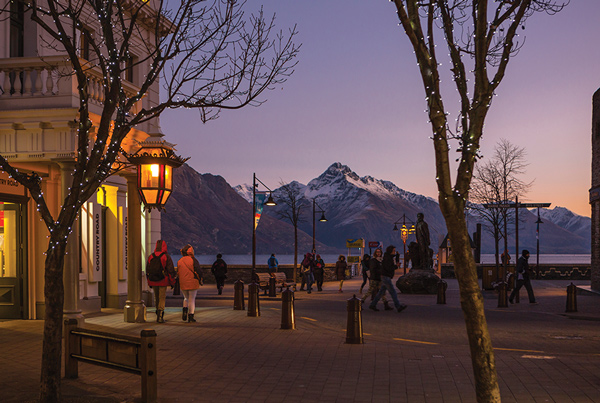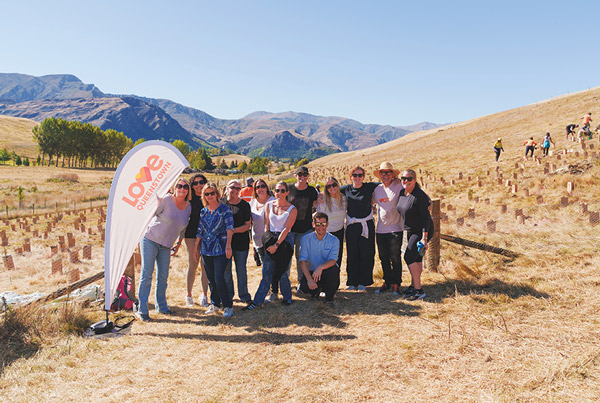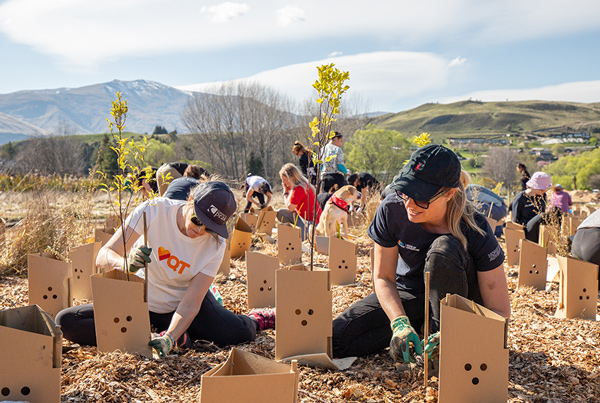
NORTH & SOUTH + Destination Queenstown

Queenstown, New Zealand, known for its breathtaking landscapes and adrenaline-pumping activities, has long been a favoured destination for tourists. However, the increasing influx of visitors, carbon emissions and pollution has raised concerns about the sustainability of tourism in the region. But don’t pack away your suitcases; these issues have prompted a transformative shift towards regenerative tourism, an approach that aims not only to sustain but also to restore and rejuvenate the natural environment and local community.
The vision of destination Queenstown
At the forefront of this movement is Destination Queenstown, the regional tourism organisation tasked with promoting and managing regenerative tourism in the area. If anyone can achieve this, it is CEO Mat Woods, who has impeccable credentials in environmental stewardship. During his tenure as Head of Sales at Cardrona, he was part of the team that implemented significant waste reduction initiatives on the mountain. “It was a matter of taking small steps and watching them all add up,” Mat reflects. “First, the disposable coffee cups went, then all plastic including soda bottles, water bottles, in the end we didn’t need the rubbish bins.”
A shift from conventional marketing to destination management
Traditionally, Destination Queenstown focused on attracting as many visitors as possible through conventional marketing strategies. However, as Mat points out, the community began to feel the strain of tourism numbers. “Pre-covid, there was significant pressure on our social licence to operate,” he says. “Residents felt the impact of high visitor numbers and questioned the benefits of tourism. This led us to rethink our approach and focus on destination management.”
Queenstown is a place where the air itself seems laced with promise. Destination Queenstown believes that regenerative tourism here can be a lifeline, supporting local businesses and ensuring economic benefits reach every corner, preserving the community’s soul.
But it’s not just about economic well-being. Mat emphasises the four pillars of the plan. “It’s about the environment — giving back more than we take through reforestation, waste reduction, and sustainable practices — a quiet revolution. Social well-being involves fostering genuine connections between tourists and locals and ensuring equitable distribution of tourism’s benefits. Cultural well-being ties everything together by preserving and celebrating the region’s heritage, integrating local iwi, Kai Tahu Māori knowledge, and supporting Māori-led enterprises.” These pillars form the framework of a community that understands true stewardship.

Decarbonization and environmental initiatives
One of the most ambitious projects under Queenstown’s destination management plan is rapid decarbonisation. “We set a goal to become carbon zero by 2030,” Mat states. “This has created a sense of urgency and commitment among local businesses and the community.” An example of this commitment is the Electrify Queenstown event, which focused on the economic and environmental benefits of electrifying local businesses. The endeavour, while fiscally challenging, has been embraced for its innovation and environmental foresight. Ngai Tahu Tourism who operate the Shotover Jet for example, is already working towards electrifying their fleet of jet boats, highlighting that while the initial costs are higher, the long-term savings and environmental benefits are substantial. Who wouldn’t want to enjoy the stunning natural scenery with less noise and pollution, knowing they are supporting sustainable tourism practices?
Collaborative efforts and community involvement
Collaboration is a cornerstone of Queenstown’s regenerative tourism strategy. The community and local businesses are actively involved in developing and implementing the destination management plan. “Our plan is truly a community-driven initiative,” Mat emphasises. “We held multiple workshops and consultations to ensure that everyone’s voice was heard.”
The “Love Queenstown” fund is another example of community involvement. This fund, delivered in partnership with Wakatipu Community Foundation, allows businesses and visitors to contribute to local environmental and social projects. The fund supports initiatives like reforestation, climate change mitigation, and biodiversity projects, ensuring that tourism dollars directly benefit the community.


Challenges and future prospects
Transitioning to a regenerative tourism model is not without its challenges. Changing the mindset of both tourists and tourism operators requires continuous education and awareness campaigns. Attracting visitors for longer stays, encouraging a ‘slower’ type of tourism, and redefining the way we think about travel.
By focusing on economic, environmental, social, and cultural well-being, tourism in Queenstown is building in a greener, fairer way. Should the rest of the country be taking notes? As Mat says “If you can do it here, why not do it in a bigger city?”
